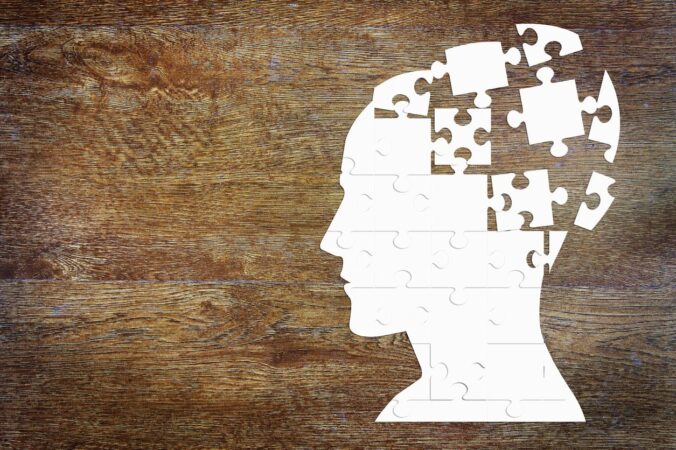The intersection of religion and politics has long shaped national identities and public policy across the globe. In the United States and other Western democracies, one of the most significant manifestations of this intersection is the emergence and consolidation of the religious right—a political movement rooted in conservative evangelical Christianity. While the religious right has often presented itself as a moral and cultural bulwark against secularism and liberalism, critics argue that it also shares foundational assumptions with authoritarian and even fascist ideologies.
This post explores how the religious right has supported or perpetuated fascist assumptions, drawing on historical, ideological, and sociopolitical evidence. It argues that while not all members of the religious right are fascists, and not all fascists are religious, the movement has, in key ways, bolstered authoritarianism, nationalism, anti-pluralism, and theocratic tendencies that mirror classical fascism. Understanding this alignment is critical to assessing the threats posed to liberal democracy and secular governance.
Understanding the Religious Right
The religious right refers to a coalition of politically conservative Christian groups—primarily evangelical Protestants, but also including conservative Catholics and other denominations—who advocate for a political agenda grounded in what they describe as “biblical values.” Emerging prominently in the late 20th century, particularly in the United States, the religious right coalesced in response to perceived threats to traditional morality, such as the sexual revolution, abortion rights, LGBTQ+ rights, feminism, and secularization in public life.
Organizations such as the Moral Majority (founded in 1979 by Jerry Falwell), Focus on the Family, the Christian Coalition, and later figures like Pat Robertson and James Dobson were instrumental in mobilizing evangelical Christians into a potent political force. They supported conservative candidates, lobbied for legislation based on Christian moral teachings, and cultivated a belief in America’s divine destiny.
While their stated aims often revolved around “family values” and the preservation of religious liberty, their broader impact on democratic society has raised concerns, particularly as their rhetoric and strategies have echoed or enabled authoritarian, anti-democratic, and even fascist themes.
Fascism: A Working Definition
To explore the relationship between the religious right and fascism, we must first define fascism. Political theorists generally agree that fascism is an authoritarian nationalist ideology characterized by:
- Centralized autocratic government led by a dictatorial leader
- Suppression of opposition and dissent
- Strong regimentation of society and economy
- Militarism and glorification of violence
- Cult of tradition and revivalism
- A belief in national or cultural purity
- Anti-intellectualism and disdain for liberal democracy
- Scapegoating of minorities and outsiders
Though rooted in the early 20th century (notably in Mussolini’s Italy and Hitler’s Germany), fascism is not confined to that era. Political philosophers such as Umberto Eco have argued that fascism can manifest in modern, often subtler forms—what Eco termed “Ur-Fascism” or “eternal fascism.” In this context, the behaviors and ideologies of the religious right can be critically examined.
Authoritarianism and the Worship of Power
One of the defining features of fascism is a reverence for strong, centralized authority, often embodied in a singular leader. Many factions of the religious right have shown a tendency to support authoritarian figures who promise to restore a moral or Christian nation.
For example, the overwhelming support for Donald Trump among white evangelical voters—despite his personal life and behavior being starkly at odds with Christian teachings—reveals a preference for power and victory over principle. Trump’s projection of strength, his anti-immigrant rhetoric, and his commitment to appointing conservative judges aligned with religious right priorities made him a messianic figure to many. Religious leaders compared him to biblical figures like Cyrus or David—flawed men used by God to fulfill divine purposes.
This alignment is not unique to the U.S. In Brazil, President Jair Bolsonaro enjoyed enthusiastic support from conservative evangelicals, who praised his strongman tactics, nationalist agenda, and anti-communist stance. The religious right’s support for such leaders reflects a willingness to sacrifice democratic norms for the promise of moral restoration and cultural dominance.
Nationalism and the Fusion of Religion and State
Fascism thrives on a mythologized national identity that elevates one culture, religion, or ethnicity as the rightful foundation of the nation. The religious right frequently engages in this kind of mythmaking by claiming that America (or other nations) was founded as a Christian nation, and that returning to this religious foundation is essential for national salvation.
This fusion of religion and nationalism leads to the exclusion of religious minorities, immigrants, and secular citizens. Policies are framed not in terms of universal human rights, but in terms of divine destiny and cultural preservation. When laws or cultural practices deviate from their interpretation of Christianity, the religious right often interprets this as persecution or an attack on the nation itself.
This perspective justifies aggressive action—cultural, political, and sometimes physical—to “take back” the country. The January 6th Capitol insurrection illustrated this mindset, with rioters waving Christian flags, holding Bibles, and praying on the Senate floor while engaging in violence. The fusion of religious zeal with nationalist fervor bears unmistakable resemblance to fascist mobilization.
Anti-Pluralism and the Rejection of Democratic Norms
Fascism rejects pluralism in favor of uniformity and ideological purity. Similarly, the religious right often views cultural and religious diversity as a threat. There is little room in their vision of society for Muslims, atheists, LGBTQ+ people, feminists, or even progressive Christians. This exclusionary mindset creates an “us versus them” mentality, dividing society into the saved and the damned, the righteous and the corrupt.
Religious right leaders frequently frame political compromise and democratic debate as moral failures. This undermines the democratic process, which depends on tolerance, negotiation, and mutual respect. Instead, the religious right often promotes a Manichean worldview, where political opponents are not merely wrong but evil—agents of Satan, enemies of God, or part of a “deep state” conspiracy.
Such rhetoric delegitimizes opposition and justifies authoritarian tactics, including voter suppression, gerrymandering, and judicial overreach. It echoes fascist strategies that dismantle democratic institutions in the name of moral or national renewal.
Gender, Patriarchy, and Control of the Private Sphere
Fascism often idealizes a patriarchal family structure and rigid gender roles, viewing women primarily as mothers and reproducers of the nation. The religious right mirrors this emphasis on traditional gender norms, opposing reproductive rights, feminism, and LGBTQ+ rights. They champion a vision of the nuclear family where the man is the head, the woman is submissive, and children are raised within strict moral boundaries.
This control over the private sphere is a hallmark of both fascism and theocratic movements. The religious right’s campaigns against comprehensive sex education, gender-affirming care, and secular public schools reflect a desire to control not only public policy but private life. Such control ensures ideological conformity from a young age and perpetuates a culture of obedience and moral absolutism.
Scapegoating and the Politics of Fear
Fascist regimes often scapegoat minorities or marginalized groups as responsible for social decline. The religious right employs similar strategies, blaming societal problems on LGBTQ+ people, immigrants, Muslims, secularists, or feminists. By constructing these groups as existential threats, they create moral panics that justify repressive policies.
For instance, the “groomer” rhetoric used by some religious right figures to describe LGBTQ+ people mirrors classic fascist propaganda about moral corruption and the endangerment of children. Similarly, framing immigrants as invaders or criminals stokes xenophobic sentiment and normalizes militarized borders and family separation.
This politics of fear is effective because it simplifies complex problems into moral binaries and directs public frustration toward convenient enemies. It prepares the ground for authoritarian solutions.
Anti-Intellectualism and Disdain for Critical Thought
Fascism is often anti-intellectual, portraying academics, journalists, and artists as decadent elites who undermine tradition. The religious right shares this disdain, frequently accusing universities, scientists, and the media of promoting secularism, moral relativism, and anti-Christian bias.
The rejection of climate science reflects a broader suspicion of expertise that challenges religious doctrine or conservative orthodoxy. This anti-intellectualism is reinforced through alternative media ecosystems—Christian radio, conservative social media—that insulate followers from dissenting views.
By undermining trust in knowledge-producing institutions, the religious right fosters a culture of obedience to religious and political authorities, a condition conducive to fascist governance.
The Theocratic Impulse and Dominionism
Some strands of the religious right go beyond conservative policy advocacy and embrace Dominionism—the belief that Christians should govern all aspects of society according to biblical law. This explicitly anti-democratic ideology rejects the separation of church and state and envisions a society where religious law overrides secular governance.
While not all evangelicals are Dominionists, the influence of Dominionist thinking within the religious right has grown, particularly through the New Apostolic Reformation and leaders like Lance Wallnau and Paula White. They argue that Christians must take control of the “Seven Mountains” of society—government, education, media, arts, business, family, and religion—to usher in God’s kingdom.
This vision is functionally theocratic and structurally authoritarian. It parallels the fascist desire to unify church, state, and culture under a singular, unquestioned authority.
Conclusion
The religious right is not a monolith, and it includes many believers who sincerely advocate for morality, charity, and justice within a democratic framework. However, when viewed as a political movement, it has consistently supported or enabled ideologies and policies that resonate with fascist assumptions: authoritarianism, nationalism, anti-pluralism, patriarchal control, anti-intellectualism, and scapegoating of minorities.
These tendencies threaten liberal democracy by undermining its foundational commitments to equality, diversity, individual rights, and secular governance. By sacralizing political power and pursuing cultural dominance under the guise of moral restoration, the religious right can serve as a vehicle for authoritarian and even fascist resurgence.
Understanding this relationship is not an attack on faith itself but a call to vigilance. Democracies must ensure that religious belief does not become a justification for repression, and that faith communities are not co-opted by forces that seek to dismantle the very freedoms they claim to defend.




